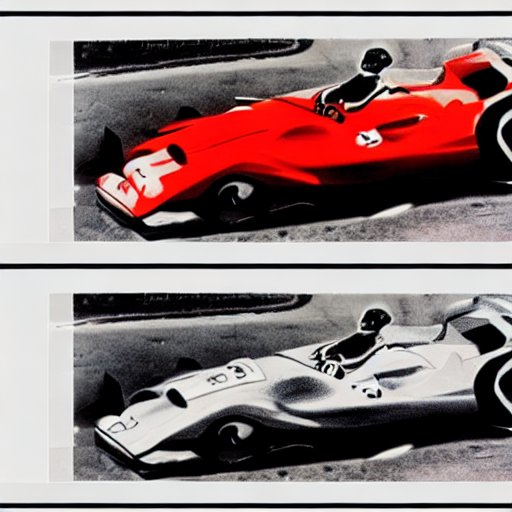Real-time 2D to 3D Video Conversion Techniques

Introduction
Real-time 2D to 3D video conversion techniques, such as those implemented by software like Stream to 3D, aim to transform 2D video content into stereoscopic 3D in real-time. This real-time conversion allows viewers to experience depth perception immediately, without any post-processing delays, making it suitable for applications that demand instant visual immersion. These conversion techniques leverage a variety of algorithms and visual effects, including the Pulfrich Effect and depth estimation, to create the illusion of depth.
Pulfrich Effect-Based Approaches
The Pulfrich Effect, wherein lateral motion is perceived with a depth component due to differences in signal timing between the eyes, has been utilised for real-time 2D to 3D video conversion. Techniques based on this effect use temporal disparities to produce depth perception. Howard and Rogers (2008) provide a foundational overview of the Pulfrich Effect, detailing how visual latency and luminance differences can create an illusion of depth. Leveraging this phenomenon, real-time 2D to 3D conversion systems use time-delayed frame displays and motion analysis to generate stereoscopic depth from 2D images, creating a realistic and immediate 3D experience.
Another approach involves manipulating contrast within video frames. Kane, Guan, and Banks (2017) discuss how contrast differences between the eyes induce a depth perception effect similar to the Pulfrich Effect. By dynamically adjusting brightness and contrast in specific image regions, algorithms can exploit luminance cues to generate temporal disparities and enhance perceived depth in real-time. This technique, coupled with real-time analysis of video content, allows viewers to experience stereoscopic 3D without specialised glasses or extensive post-processing.
Depth Estimation and Neural Network-Based Approaches
In addition to the Pulfrich Effect, depth estimation techniques also play a crucial role in 2D to 3D video conversion. Battiato et al. (2007) introduce a method that extracts motion vectors from compressed video to build depth maps, which are then used to create stereoscopic pairs. This approach supports real-time conversion, as it enables systems to rapidly generate depth information for each frame.
More recent advances involve deep learning. Xie, Girshick, and Farhadi (2016) propose a deep convolutional neural network approach, which automates depth mapping from 2D frames without explicit depth maps. Their technique, trained on existing 3D movies, estimates depth effectively, making it feasible for real-time 2D to 3D video conversion. Similarly, Brundyn et al. (2021) discuss stereo video reconstruction in medical applications, using U-Net neural networks to achieve real-time depth perception without relying on explicit depth mapping.
Academic References for Real-Time 2D to 3D Video Conversion Techniques
The following works highlight various real-time 2D to 3D video conversion techniques that leverage the Pulfrich Effect, depth estimation, temporal disparity, contrast manipulation, and neural network-based depth mapping. These approaches aim to deliver immersive 3D experiences from 2D video content across different applications:
1. Howard, I. P., & Rogers, B. J. (2008). The Pulfrich Effect.
This chapter discusses the Pulfrich effect, covering its geometry, mechanisms, and the role of luminance and contrast in depth perception through temporal disparity.
2. Kane, D. A., Guan, M. A., & Banks, M. S. (2017). Interocular contrast difference drives illusory 3D percept.
This study investigates how differences in contrast between the eyes can create a 3D illusion, similar to the Pulfrich effect, showing that contrast manipulation can induce depth perception.
3. Battiato, S., Gallo, G., Stanco, F., & Stella, F. (2007). Real-time 2D to 3D video conversion.
This paper presents a real-time implementation of 2D to 3D video conversion using compressed video. The method analyses compressed 2D video by extracting motion vectors to build depth maps for each frame, which are then used to synthesise stereo pairs.
4. Xie, J., Girshick, R., & Farhadi, A. (2016). Deep3D: Fully Automatic 2D-to-3D Video Conversion with Deep Convolutional Neural Networks.
The authors propose using deep neural networks to automatically convert 2D videos and images to a stereoscopic 3D format. Their approach is trained end-to-end directly on stereo pairs extracted from existing 3D movies, eliminating the need for ground truth depth maps.
5. Brundyn, A., Swanson, J., Cho, K., Kondziolka, D., & Oermann, E. (2021). Stereo Video Reconstruction Without Explicit Depth Maps for Endoscopic Surgery.
The authors introduce the task of stereo video reconstruction for minimally invasive surgical video. They design and implement end-to-end U-Net-based solutions that take multiple consecutive video frames as input and output the missing view, enabling depth perception without explicit depth maps.
For further history on 2D to 3D Video Conversion Techniques, see below:
